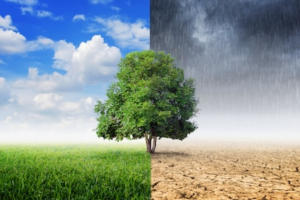Dark bands are medial moraines — pieces of rock scraped off of the mountains and carried away by the flow of the glacier. You can trace each moraine upstream (NW) to its source region, where ice flows around a mountainside.
Scene center is 66.48°N, 36.07°W.
I made this video using Google Earth Engine.
We have a strong climate science and paleoclimate group at the University at Buffalo, with a particular emphasis on the Arctic.
- Dr. Bea Csatho leads the Glaciology Remote Sensing Laboratory in the Department of Geology. The RSL studies recent elevation changes of glaciers and ice sheets, especially the Greenland Ice Sheet and the East and West Antarctic Ice Sheets. She uses altimetry data from satellites and airplanes, photogrammetric data from ground and air, and is involved in NASA’s newest, latest, and greatest ice altimeter satellite, ICESat-2.
- Dr. Jason Briner leads the Paleoclimate Laboratory in the Department of Geology. The lab is also known as the Glacier History Lab. They use lake sediments, cosmogenic isotopes, and other methods to reconstruct the extent of Arctic and sub-Arctic glaciers in the recent past.
- Dr. Elizabeth Thomas leads the Biogeochemistry Lab in the Department of Geology. They analyze organic biomarkers in a suite of state-of-the-art chemistry machines in order to infer changes in rainfall, moisture source, and temperature over the Holocene.
- Dr. Stuart Evans leads the Land-Atmosphere Group in the Department of Geography. They study the effects of the the land surface, including dust emissions, on current and future climate by running large simulations through general circulation models and global climate models.
- Dr. Sophie Nowicki leads the ice sheet and sea level lab in the Department of Geology. They study current and future projections of global sea level sourced from Earth’s ice sheets.
- Dr. Kristin Poinar leads the Glacier Modeling Lab in the Department of Geology. We use a combination of numeric models and remote sensing data to understand the dynamics driving observed changes in today’s glaciers and ice sheets, particularly the Greenland Ice Sheet.
 (Shutterstock)
(Shutterstock)